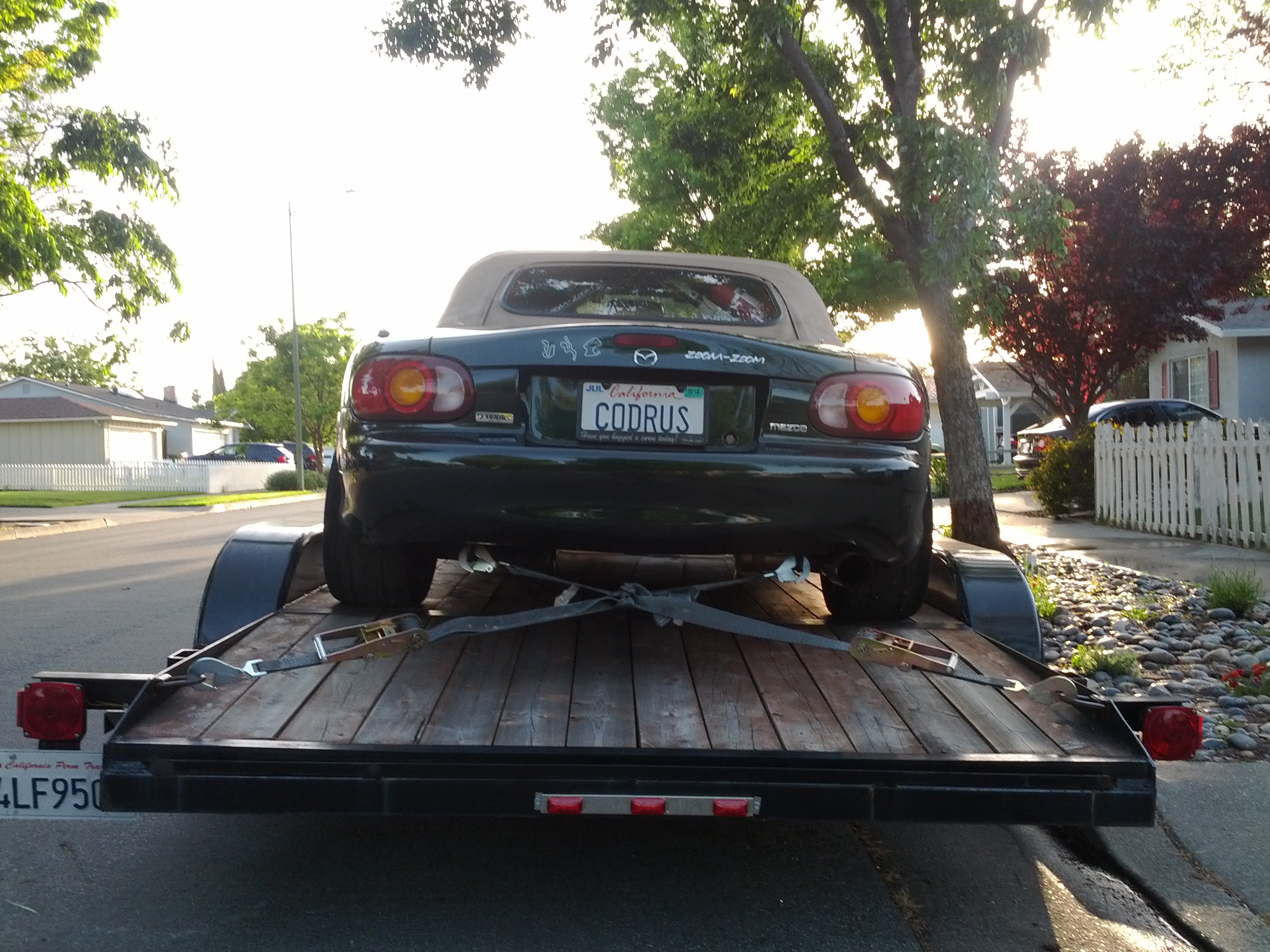So I finally got me 16' open deck car trailer registered. It was delivered back in January by fellow GRMer Stampie, who was on the way home from his snow adventure with Stampie Jr. The main reason for the delay from then til now was the fact that I owned no tow vehicle. ![]() We remedied that not long ago, with the purchase of a 2006 Toyota 4Runner V8 Limited. Towed for the first time today and it was nice!
We remedied that not long ago, with the purchase of a 2006 Toyota 4Runner V8 Limited. Towed for the first time today and it was nice!
First stop was the weigh station. Evidently, one needs a weight slip to register a trailer. Ask me how I know. 1680lbs, according to the local moving company scale!
Slip in hand, back to the tax office. Registration was a breeze at that point. I'm legal!
Now that I can actually use it, I have questions.
-
Insurance - Is it covered under my auto insurance? Do I need a separate policy? Do I need an umbrella policy to be extra safe?
-
Trailer brakes - The trailer has none. I would have to pay to have it done, but can trailer brakes be retrofitted to the trailer fairly easily? Are they highly recommended? If I have them added, isn't there some sort of controller that goes inside the truck? Does the trailer shop do that part as well?
-
Loading - How do I figure out where to position my NB Miata on the trailer (front to rear)? I know balance is an important thing, but I have no idea where to put it.
-
Straps - The PO included some killer straps when I bought the trailer and Miata. I've seen folks "cross" strap cars on trailers. Is that the recommended approach? He had the car tied down in the front by the baby teeth. Is that standard for a Miata on a trailer?
-
General advice - Brake early, accelerate slowly, etc. What other tips do you have? I'm new to this! Do I need to keep the transmission out of OD if I'm towing on flat land here in FL?
Thanks!




































